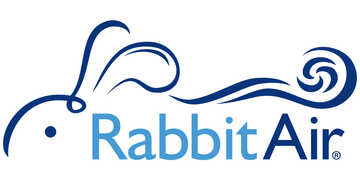When selecting an air purifier, ensuring it does not produce ozone is crucial, especially if the purifier is intended for a nursery. Ozone, while useful in some contexts, can have undesirable effects on indoor air quality. Understanding how to determine if your air purifier produces ozone can help maintain a cleaner, hygienic environment.
What is Ozone?
Ozone is a molecule of three oxygen atoms, with the chemical formula O3. It plays a dual role in Earth's atmosphere: in the stratosphere, it forms the ozone layer that protects living organisms from harmful ultraviolet (UV) rays.
However, at ground level, ozone can become a concern. It can form when oxygen molecules react with pollutants like nitrogen oxides and volatile organic compounds (VOCs) under sunlight.
While ozone can neutralize odors and some pollutants, it can also cause respiratory issues and other health problems when present in high concentrations indoors. To remain safe, always choose air purifiers that have been tested to follow CARB requirements or other local and national ozone-level regulations.

Air Purifiers and Ozone Production
Air purifiers are relatively simple devices, but each has its own unique approach to cleaning the air we breathe. But here's where things get interesting: some of these purifiers rely on ozone to effectively remove some airborne threats.
First, we have air purifiers with ozone generators. They use electrical discharges or ultraviolet light to create ozone, which then goes on a rampage against odors and pollutants. Ozone is very effective at making air fresher and smell cleaner.
There are also ionizing air purifiers. These use charged particles to trap pollutants right out of the air. But here's the twist – some ionizers are also ozone producers, releasing small amounts as a by-product.
Then we have the UV-C light purifiers, the germaphobes of the bunch. These devices shine ultraviolet light to remove some microbiological contaminants from the air. Some of these produce ozone, but most modern air purifiers avoid the wavelengths that produce ozone and/or employ shielding to prevent ozone from forming.
Finally, we have the electrostatic precipitators. These use electric fields to charge particles and then collect them on plates like a pollution magnet.
Most are sophisticated enough to not produce ozone in harmful concentrations. They’re also not that common among air purifiers so they’re not difficult to avoid.
Signs That Your Air Purifier Produces Ozone
Identifying whether your air purifier produces ozone involves observing several key signs:
- Odor: A distinctive, sharp smell, often compared to chlorine or bleach, is a common indication of ozone. This odor is noticeable when the purifier is in operation and can be more pronounced in poorly ventilated spaces.
- Product Information: Manufacturers are required to disclose if their products produce ozone. Check the product specifications, user manual, or the manufacturer's website. Look for any mention of ozone generation or emission levels.
- Certification Labels: Look for certification from organizations like the California Air Resources Board (CARB) or the Association of Home Appliance Manufacturers (AHAM). CARB, in particular, provides certifications for air purifiers that ensure they meet stringent ozone emission standards.

Choosing the Right Air Purifier for a Nursery
Selecting an appropriate air purifier for a nursery requires attention to features that ensure a safe and clean environment for infants:
- Filter Type: Opt for air purifiers with HEPA filters, which are highly effective at trapping particles like dust, pollen, and pet dander. Activated carbon filters can also capture odors and some VOCs, providing a cleaner atmosphere without producing ozone.
- Low Ozone Emission: Ensure the air purifier is labeled as low- or no-ozone-emitting. Models certified by CARB are a good choice, as they are tested to meet stringent ozone emission standards.
- Noise Levels: In addition to ozone production, consider the noise level of the air purifier. For a nursery, a quieter model will ensure the air purifier does not disrupt sleep.
- Ease of Maintenance: Choose an air purifier that is easy to clean and maintain. Regular maintenance helps ensure the purifier continues to operate efficiently and effectively.
- Safety Features: Look for safety features such as automatic shut-off and filter change indicators to ensure the air purifier operates safely and effectively.
Knowing whether your air purifier produces ozone is vital for maintaining a cleaner and more hygienic environment, particularly in spaces like a nursery.
By understanding the types of air purifiers that might produce ozone, recognizing the signs of ozone production, and choosing the right product, you can ensure a more pleasant and fresh indoor atmosphere. When selecting air purifiers, humidifiers/dehumidifiers, and any other air quality control appliances, make sure you understand what their mechanism of action is. That will help you select the ones that best suit your needs.




